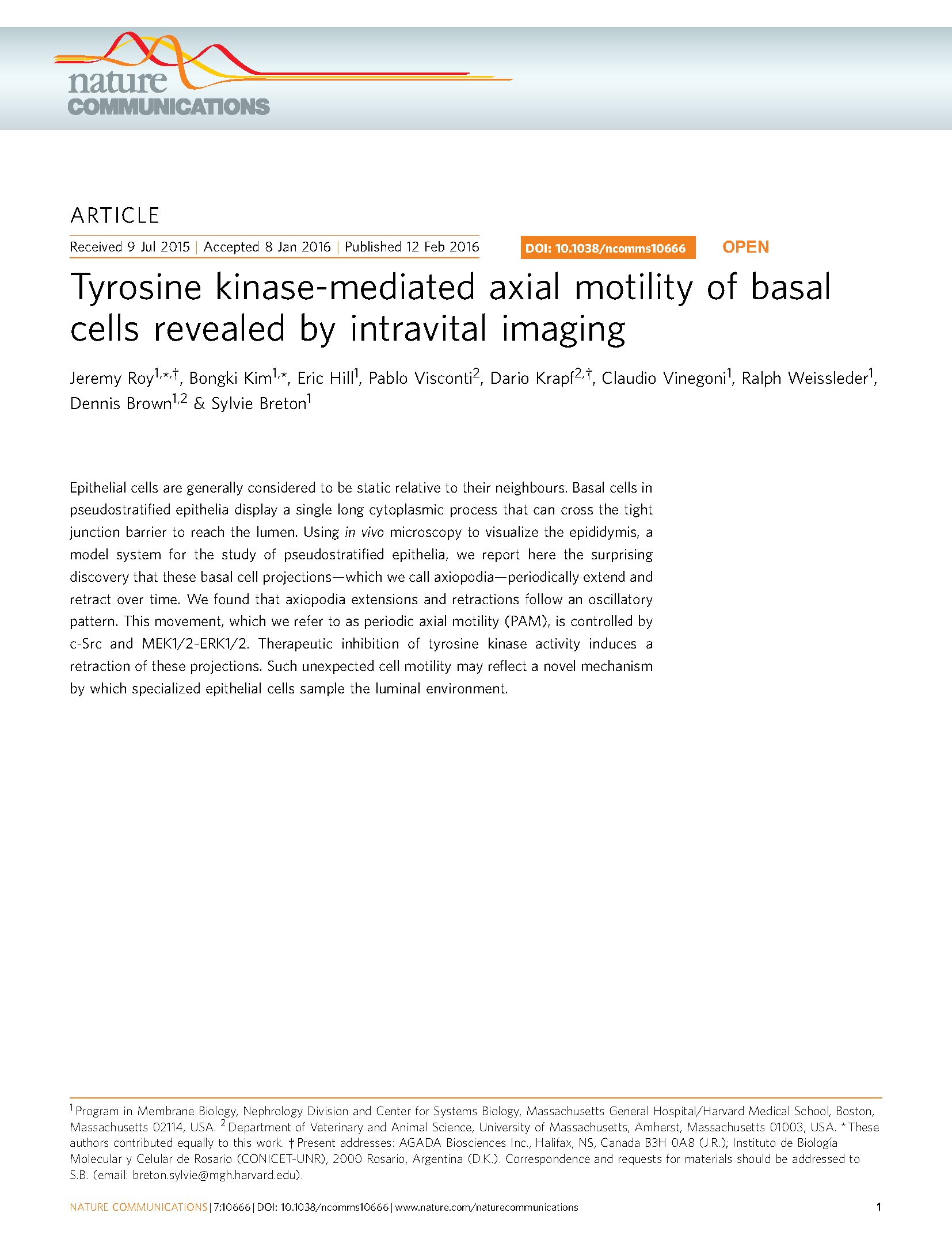Tyrosine kinase-mediated axial motility of basal cells revealed by intravital imaging
Nature Communications
Abstract
"Epithelial cells are generally considered to be static relative to their neighbours. Basal cells in pseudostratified epithelia display a single long cytoplasmic process that can cross the tight junction barrier to reach the lumen. Using in vivo microscopy to visualize the epididymis, a model system for the study of pseudostratified epithelia, we report here the surprising discovery that these basal cell projections-which we call axiopodia-periodically extend and retract over time. We found that axiopodia extensions and retractions follow an oscillatory pattern. This movement, which we refer to as periodic axial motility (PAM), is controlled by c-Src and MEK1/2-ERK1/2. Therapeutic inhibition of tyrosine kinase activity induces a retraction of these projections. Such unexpected cell motility may reflect a novel mechanism by which specialized epithelial cells sample the luminal environment."
Full citation
For attribution in academic contexts, please cite this work as:
| Roy, J., Kim, B., Hill, E., Visconti, P., Krapf, D., Vinegoni, C., Weissleder, R., Brown, D., & Breton#, S. (2016). Tyrosine kinase-mediated axial motility of basal cells revealed by intravital imaging. Nature Communications, 7, 11. https://doi.org/10.1038/ncomms10666 |

Roy, J., Kim, B., Hill, E., Visconti, P., Krapf, D., Vinegoni, C., Weissleder, R., Brown, D., & Breton#, S. (2016). Tyrosine kinase-mediated axial motility of basal cells revealed by intravital imaging. Nature Communications, 7, 11. https://doi.org/10.1038/ncomms10666